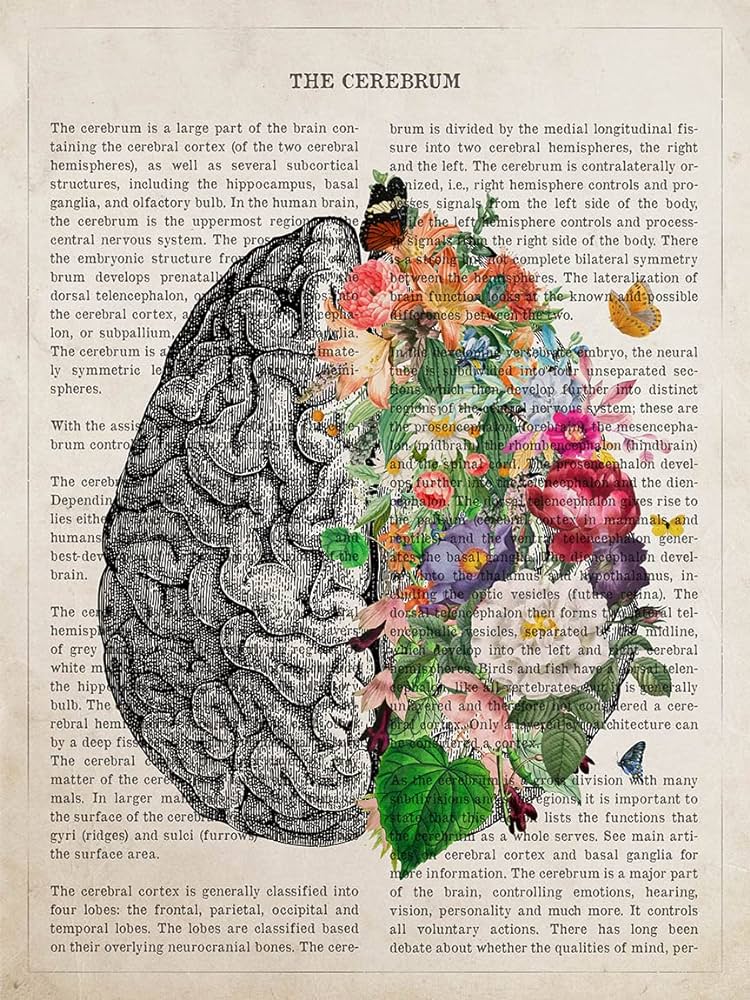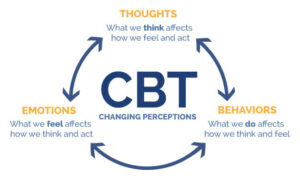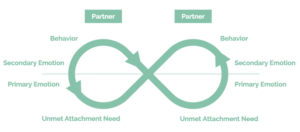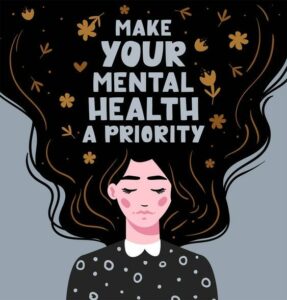April 5, 2024
Exploring the Benefits of Therapy and Navigating The Barriers of Professional Counseling

There are around 7.8 billion people on earth and every single one of them has struggled with unfavorable thoughts and emotions due to adverse circumstances. The negative feelings and random unfortunate events of life are not preventable but, there are ways to make them easier to manage. Exploring the benefits of various therapeutic practices can generate new ways of improving quality of life and mental health. Unfortunately, there are many barriers that hinder proper mental health treatment. For example, social stigma in the media, environmental pressures, and limited access to health care can make getting help a daunting experience for many people. When it comes to therapy, medical professionals diagnose individuals based on their history of symptoms to create more advanced treatment options. In terms of specific diagnoses, diagnostic labels are designed to be helpful, but they can also be intimidating and create a fear of the condition. The term “therapy” can bring out similar negative emotional responses because some can feel like going to see a counselor suggests there’s something mentally wrong with them. The reality is that not everyone receiving benefits from therapy is suffering from deep emotional trauma or a severe mental health disorder. It is not a practice that should be reserved for only extreme cases of psychological issues. Therapy is a healthy way for anyone struggling with stress, anxiety, and other uncomfortable emotions to heal and cope with the pressures of everyday life. I argue that attending therapy or practicing therapeutic exercises have the ability to positively affect anyone’s life regardless of their mental health journey or diagnosis of a mental health disorder.

In order to receive the most benefits from therapy, it helps to investigate the different forms and methodologies. Many people assume that therapeutic practices do not expand beyond a session room, a client, and the therapist. This common misconception can deter people from therapy altogether. In reality, most kinds of therapy can have a connection to the client’s interest and passion. It can involve, music, animals, art, and many other ways of helping a person heal and cope with the hardships of life. Once you find a practice and begin therapy, it is essential that the client discusses their goals and expectations with the therapist. Not every therapist or specific therapy will be the right fit for every person. To help narrow down the search, it also helps to research different therapeutic methodologies. A common form of therapy is known as cognitive behavioral therapy or CBT. It focuses on exploring a person’s thoughts, feelings, and behaviors to improve the client’s mental state and mindset. The core principles of CBT involve identifying false or negative thoughts and restructuring them (Morrow 3). It is one of the most common forms of dialectical therapy and has helped people from all walks of life organize their thoughts. The methodology of CBT depends on the client’s reason for attending therapy and/or the specific disorder presented. The triangulation between thoughts, behaviors, and feelings is a constant practice to help the clients understand themselves. The idea is that a client’s thoughts influence how they feel and how they feel affects how they behave. It is a cycle that all people go through, and therapy can help navigate it. According to The National Library of Medicine, the term cognitive comes from the term “cognoscere” which means to recognize in Latin. Recognizing one’s thoughts and labeling them is a very helpful tool to mitigate distressing emotions and the actions that result from those feelings. In other words, “The goal is to reveal and change false and distressing beliefs, because it is often not only the things and situations themselves that cause problems, but the importance that we attach to them too” (“Cognitive Behavioral Therapy” 1). It is very common for people not to understand the harmful impact of their thoughts. Everyone has thoughts, and oftentimes, they can be unsettling and intrusive. People with obsessive-compulsive disorder and other anxiety-based disorders can have intrusive thoughts however, they do not just affect the diagnosed individuals. The journal article “You Can Run but You Can’t Hide: Intrusive Thoughts on Six Continents” suggests that nearly everyone has unwanted thoughts and impulses. The article highlights that disturbing thoughts and the mind’s creation of unsettling images are widespread across the globe. Anyone can have intrusive thoughts as well as an increase in anxiety and distress as a result. (A.S Radomsky et al. 4). CBT and other therapies aim to assist in managing these thoughts and help dampen the fear response that occurs as a result. When suffering from unwanted thoughts, it is very helpful to have a mental health professional help you realize that you are separate from your thoughts.

Professional counseling offers many ways to benefit lives. Another reason to consider therapy is to improve communication skills to decrease conflict and generate healthy ways to cope with anger and frustration. Relationship issues are exceedingly common in America, and having a mediator to help address problems between couples has shown auspicious results. Similarly to intrusive thoughts, relationship struggles can happen to anyone. For example, divorce in America is a result of nearly 50% of all marriages. Research by Wilkinson & Finkbeiner (2022) suggests that after a person remarries, their likelihood of separation increases by 10% for a second marriage and 13% for a third. A licensed counselor has the ability to help the couple communicate in a healthy way that promotes growth in the relationship without a need for the dissolution of the marriage. Another study from The National Library of Medicine shows that the success rate of couples counseling is roughly 70%. If more people went to therapy to work on their relationships, there would be less divorce in the country. Divorce can be costly and complex to navigate depending on various factors. Children who come from divorce have difficulty adapting to emotionally stressful situations. It is a core event in the lives of many children and adolescents and remains a profound experience as they grow up and start their own families. Not only does it affect their immediate life, but it will also affect their long-term relationships and interactions with others. For instance, if children fight with their parents and avoid healthy communication, they often replicate these behaviors in other relationships. Therapy can help stop the cycle of miscommunication in families passed down through generations. A melting pot of issues can be resolved when working with a counselor and your partner. Benefits include assistance with working through infidelity, monetary and parental conflicts, substance abuse, and communication difficulties (“Couples therapy…” 3).
My personal experience with counseling has inspired me to advocate for others to prioritize their mental health. I have had a long and arduous journey with counseling; but I can confidently say that I would not be where I am today if I did not see a therapist. To better understand the importance of counseling, we must take a trip back to 2013. About eleven years ago, my father was going through a job transition that required my family to move from San Antonio to Dallas, Texas. When I heard that I had to leave my home and change schools, it felt like my world was falling apart. Shortly after starting school in the new city, things started happening that I couldn’t understand or explain to anyone around me. Suddenly, I would have episodes where became hyper-aware of my heartbeat and every other noise in the classroom. My chest felt tight, and the room seemed to appear smaller and smaller until I could not feel anything but fear. I did not know it then, but that was the first time I had a panic attack. It was a terrifying experience, and it happened many times before I told my mom. As a ten-year-old, it was hard for me to process the emotions I was experiencing. I thought I was going crazy and in my young mind, telling anyone would make my belief accurate. When I finally approached my mom with everything happening at school, she spoke to me with empathy and love. She scheduled me for an appointment with a therapist who I started seeing once a week after school. At first, I was scared to share anything I was feeling with my counselor. It took a few sessions to navigate through feeling vulnerable with a new person. I remember the peaceful feeling of reassurance when my therapist explained to me that I was going through anxiety from the environmental shift. She assured me it is a widespread phenomenon for kids and adults. For the first time in a long while, I didn’t feel alone in everything I was going through. I eased into the narrative that all emotions are transient, and nothing lasts forever. I began to practice coping skills to manage the symptoms of anxiety. I still use many of the strategies when I struggle with overstimulation and anxiety. The tools I acquired from seeing my therapist have changed my life and the way I cope with all kinds of problems and emotional struggles.
When navigating the barriers of professional counseling, it can be very helpful to learn some individual therapeutic activities and exercises that you can practice while at home, running errands, and even at work. A particular method I learned from my experience in therapy is called mindfulness. Western culture tends to focus on the future and as a result, people shift into an auto pilot headspace to maximize their ability to complete tasks. While it can aid in the ability to achieve certain goals, a future centered perspective can also spark anxiety and other negative feelings that inhibit productivity and joy. The purpose of mindfulness is to move the focus of the mind to the present by completing short meditative exercises. Allowing the brain to cultivate a sense of present-moment awareness can help relieve stress and anxiety, improve mood, and manage sleep issues. In the book Mindfulness 101, Dr. Linda White demonstrates how to practice mindfulness by using the Body Scan Method. She asserts that the exercise will take about thirty minutes and encourages the reader to lay on their back or sit in an upright position. Dr. White instructs the reader to then mentally scan the body by first bringing awareness to the lower extremities such as the toes, feet, and legs. The goal is to temporary diminish mental preoccupations and find a state of relaxation by bringing attention to the various senses you feel. She directs the reader to continue moving the attention to each part of the body until you get to the neck and head. It is important to remember distractions are normal and to let them pass without judgment or self-rebuke (White 76). When I practice this method, I spend time focusing on how the certain fabrics feel on my skin and systematically move from one area of my body to the next. If the thought of seeing a therapist is daunting, mindfulness meditation therapy is a good way to care for your mental health without needing to leave the house or spend money. Some additional sources for mindfulness meditation can be accessed on mindful.org and www.freemindful.org.
While I am advocating for people to care for their emotional well-being in therapy, it would be problematic if I was not candid about the barriers people face due to social stigma, poor access to healthcare in the United States, and a variety of other factors. Several studies have shown that the inability to receive care is a central cause of the mental health crisis that is ongoing in America. Even though several non-profit organizations intend to help individuals without insurance or sufficient funding for therapy, access is still not achievable for a large percentage of the population. In order to work towards a change, it’s essential to break down the root causes people experience when attempting to treat their mental health concerns. The most significant concern most Americans have is the high cost and insufficient insurance coverage for care. Research from the article “Study Reveals Lack of Access as Root Cause for Mental Health Crisis in America” asserts that “twenty five percent of Americans reported having to choose between getting mental health treatment and paying for daily necessities”(Majlessi et al. 4). Several people seeking treatment also have physical disabilities or illnesses that take precedence over their emotional and mental needs. When someone is suffering from a physical ailment, the focus shifts to the body. The mind is often neglected to afford maintenance for the body’s physical wellbeing. Majlessi also reports that “nearly one in five of Americans, or 17%, noted they have had to choose between getting treatment for a physical health condition and a mental health condition due to their insurance policy. The majority (64%) of Americans who have sought treatment believe the U.S. government needs to do more to improve mental health services” (Majlessi et al. 4). The data shows that the cost of care needs more attention in order for more Americans to have access to therapy and counseling services. Unfortunately, awareness is not going to solve the problems with access to healthcare overnight; however, there are many ways to access treatment that many people don’t know of. For

example, The United Way Helpline is a fantastic resource that is available throughout the United States. The line is designed for people who need assistance finding local resources and services without having to pay a fee. The line runs 24/7 with trained professionals who keep your conversations and questions confidential. It is available in over 180 languages and has helped people from all over the country connect to more than 1.6 million services. For more information about the United Way Helpline, please visit unitedway.org or dial 211.
The possibilities with therapeutic practices are endless as new ways of therapy emerge and transform each year due to each person’s needs. If you are struggling to find a therapist that you connect with, I advise that you don’t give up. Many people become discouraged if they attend a counseling session and the methodology didn’t fit their specific mental health needs, or they felt uncomfortable discussing their feelings. Due to the multidimensional and deeply complex nature of emotional struggle, it is unreasonable to assume that therapy will connect with you immediately. Counseling is a generative process that is often difficult at first as people break through barriers they have kept up for their entire lives. Fortunately, as the client and therapist move through sessions, the dialogue becomes less mechanical and shifts to feeling more organic. It will be easier for the client to be honest and trusting when the professional relationship progresses. Everyone deserves the ability to grow and heal from the things they never discuss. Attending therapy and participating in a healthy narration of feelings, memories, and experiences is a way to care for your mental wellbeing which can benefit yourself and ultimately everyone around you. Everyone sees life through the lens of their own trauma and therapy is a beautiful way to alter the field of view.
Bibliography
“Couples Therapy Can Help Mend a Marriage | University Hospitals.” www.uhhospitals.org, www.uhhospitals.org/health-information/health-and-wellness-library/article/wellness-library-v1/couples-therapy-can-help-mend-a-marriage. Accessed 28. Mar. 2024.
Majlessi, Sophia, et al. “Study Reveals Lack of Access as Root Cause for Mental Health Crisis in America.” National Council for Mental Wellbeing, 17 Nov. 2022, https://www.thenationalcouncil.org/news/lack-of-access-root-cause-mental-health-crisis-in-america/#:~:text=High%20Cost%20and%20Insufficient%20Insurance,and%20paying%20for%20daily%20necessities. Accessed 31 Mar. 2024.
Schofield, Margot J, et al. “Short and Long-Term Effectiveness of Couple Counseling: A Study Protocol.” BMC Public Health, vol. 12, no. 1, 3 Sept. 2012, www.ncbi.nlm.nih.gov/pmc/articles/PMC3490822/, https://doi.org/10.1186/1471-2458-12-735. Accessed 31 Mar. 2024.
Schnitman, Dora Fried. “Dialogue and creativity: The generative dialogical perspective in therapy.” Australian and New Zealand Journal of Family Therapy, vol. 44, no. 1, Mar. 2023, pp. 41–56, https://doi.org/10.1002/anzf.1524. Accessed 31 Mar. 2024.
White, Linda B. “Mindfulness 101.” Mother Earth Living, vol. 2, no. 7, Nov. 2014, pp. 75–79. EBSCOhost, research.ebsco.com/linkprocessor/plink?id=e84366f1-cc30-33b4-8e3a-1266f646dba7.
Wilkinson & Finkbeiner “Divorce statistics and facts: What affects divorce rates in the U.S.?.” LLP. (2022, March 3). Accessed 19 Mar. 2024
“211 Data Snapshot.” United Way Worldwide, www.unitedway.org/our-impact/featured-programs/2-1-1#:~:text=211%20is%20America’s%20most%20comprehensive,seeking%20help%20with%20everyday%20needs. Accessed 31 Mar. 2024.
Tags from the story
Cognitive Behavioral Therapy
Counseling
Nomination-Social-Sciences
Therapy

Luis Ramirez
Amazing article Christiana! The information and details of your article are interesting as well as informational. People always tend to think that counseling is for the weak, but in reality, it helps you grow as a person and overcome any type of trauma that you may have as you have explained in your article. I like how you have also expressed your opinion based on all the research you have done.
25/04/2024
9:59 am